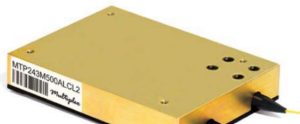What Is an RF Rotary Joint and Where Is It Used?
An RF (Radio Frequency) rotary joint is a pivotal component in systems where a part of the machine or device needs to rotate while maintaining a continuous transmission of RF signals. These specialized devices allow for the transfer of RF energy from a stationary part of the system to a rotating part without interruption. Understanding how RF rotary joints function and their applications across various industries can highlight their critical role in modern technology.

Operational Principles
An RF rotary joint is designed to provide seamless RF signal connectivity between stationary and rotating components. It typically consists of contact materials that ensure minimal signal loss during transmission, which is crucial for maintaining signal integrity and system performance.
Key Features:
- Low Transmission Loss: Ensures efficient signal transfer with minimal power loss.
- High Frequency Bandwidth: Capable of handling a wide range of frequencies, making them versatile for various applications.
- Durability and Reliability: Constructed to withstand physical stress and environmental factors, ensuring long-term operational stability.
Critical Applications of RF Rotary Joints
Radar Systems
RF rotary joints are extensively used in radar systems, particularly those installed on rotating platforms. They enable the radar antenna to rotate continuously, providing 360-degree coverage while transmitting data back to the stationary part of the system. This functionality is essential for air traffic control, maritime navigation, and weather monitoring radars.
Satellite Communication Dishes
In satellite communications, especially those involving ground stations with large parabolic dishes, RF rotary joints facilitate the rotation of the dish. This allows the dish to track satellites more effectively across the sky, ensuring consistent communication links without signal disruption.
Medical Imaging Systems
Advanced medical imaging equipment, such as those used in computed tomography (CT) scans, often incorporates RF rotary joints. These devices enable the part of the scanner that emits and receives radio waves to rotate around the patient, creating detailed and precise images for diagnostic purposes.
Broadcasting Equipment
Broadcasting towers and equipment that require rotational movement also benefit from RF rotary joints. They allow for the transmission of high-quality broadcast signals in television and radio while supporting the dynamic movement of broadcast antennas.
Technological Impact and Evolution
The development of RF rotary joints has kept pace with the increasing demands for better performance and reliability in all the fields they are used. Innovations in materials science and precision engineering have led to joints that can handle higher power levels and broader frequency ranges with greater efficiency.
Future Prospects: The future of RF rotary joints involves integration with digital systems to enhance diagnostics and real-time monitoring of performance, which could lead to predictive maintenance capabilities and even longer service life.
The RF rotary joint is more than just a component; it is a critical enabler of technology in sectors ranging from defense to healthcare. As industries continue to evolve, the demand for sophisticated rotary joints capable of supporting complex and high-frequency rotations will grow, marking a clear path for technological advancements in this field.